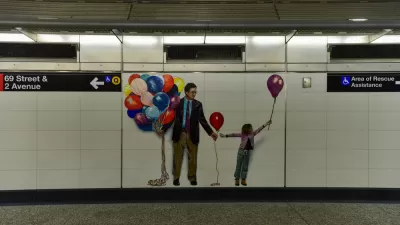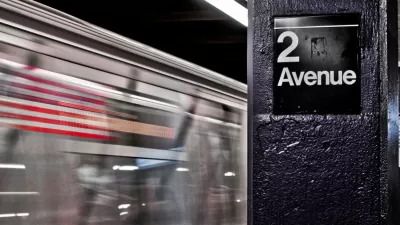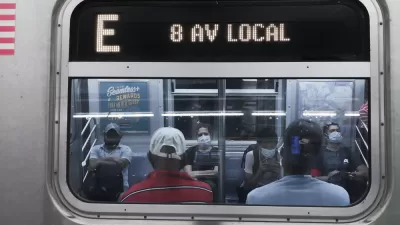The New York Times has a potential damning report about shortcuts taken by the New York MTA, under the leadership of Governor Andrew Cuomo, to deliver the Second Avenue Subway on its scheduled opening date at the beginning of the year.

"In a rush to finish New York City’s long-awaited Second Avenue subway by a New Year’s Day deadline imposed by Gov. Andrew M. Cuomo, the Metropolitan Transportation Authority failed to complete final safety testing before opening the line to the public," reports Emma G. Fitzsimmons.
Fire systems were still being tested when the new subway opened on January 1, adds Fitzsimmons. "Now more than eight months after the lavish opening, complete with sparkling wine and an elegant midnight celebration on New Year’s Eve, the subway line is still operating under a temporary safety certificate, according to the Federal Transit Administration." Another detail of the ongoing status of safety systems on the city's newest subway: "Crews have had to be posted along the line to watch for fires — an expensive effort meant to serve as a stopgap."
Fitzsimmons discovered the status of safety on the new subway line through a Freedom of Information request for reports prepared by Urban Engineers of New York for the Federal Transit Administration.
The article includes a quote by John McCarthy, a spokesperson for the Metropolitan Transportation Authority, defending the safety precautions in place on the new subway line. MTA Chair Joseph J. Lhota also states that the subway line was not opened prematurely. Still, thousands of defects were still waiting to be fixed in May, and there is not shortage of sources willing to say that the opening circumvented safety protocols.
The article is allowed a word count commensurate with the seriousness of the accusations made by the reports, so there is a lot more detail included in the source article.
FULL STORY: Months After Second Avenue Subway Opening, Safety Testing Is Not Finished

Alabama: Trump Terminates Settlements for Black Communities Harmed By Raw Sewage
Trump deemed the landmark civil rights agreement “illegal DEI and environmental justice policy.”

Study: Maui’s Plan to Convert Vacation Rentals to Long-Term Housing Could Cause Nearly $1 Billion Economic Loss
The plan would reduce visitor accommodation by 25% resulting in 1,900 jobs lost.

Why Should We Subsidize Public Transportation?
Many public transit agencies face financial stress due to rising costs, declining fare revenue, and declining subsidies. Transit advocates must provide a strong business case for increasing public transit funding.

Paris Bike Boom Leads to Steep Drop in Air Pollution
The French city’s air quality has improved dramatically in the past 20 years, coinciding with a growth in cycling.

Why Housing Costs More to Build in California Than in Texas
Hard costs like labor and materials combined with ‘soft’ costs such as permitting make building in the San Francisco Bay Area almost three times as costly as in Texas cities.

San Diego County Sees a Rise in Urban Coyotes
San Diego County experiences a rise in urban coyotes, as sightings become prevalent throughout its urban neighbourhoods and surrounding areas.
Urban Design for Planners 1: Software Tools
This six-course series explores essential urban design concepts using open source software and equips planners with the tools they need to participate fully in the urban design process.
Planning for Universal Design
Learn the tools for implementing Universal Design in planning regulations.
Smith Gee Studio
Alamo Area Metropolitan Planning Organization
City of Santa Clarita
Institute for Housing and Urban Development Studies (IHS)
City of Grandview
Harvard GSD Executive Education
Toledo-Lucas County Plan Commissions
Salt Lake City
NYU Wagner Graduate School of Public Service





























